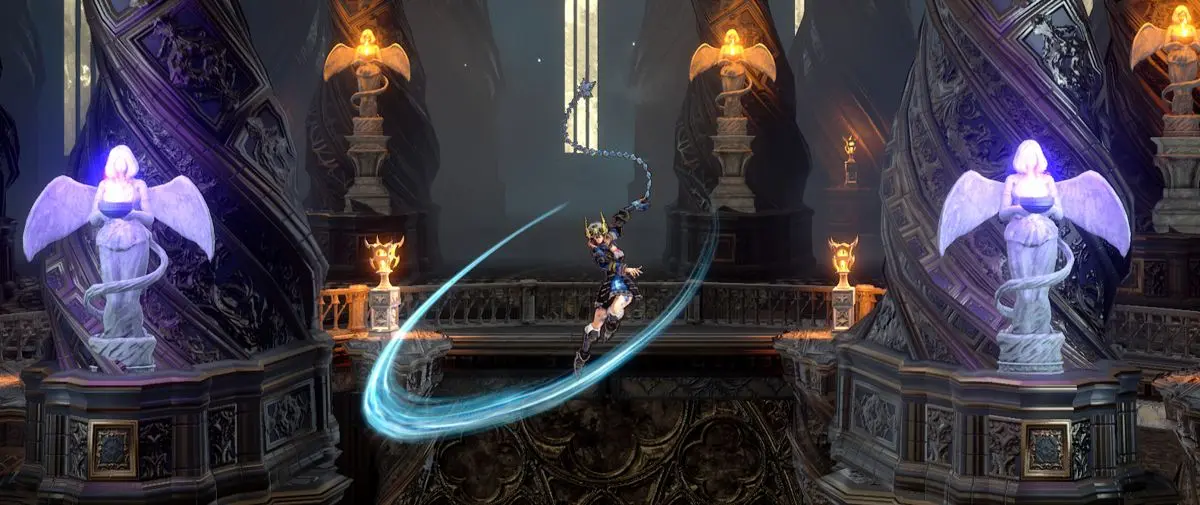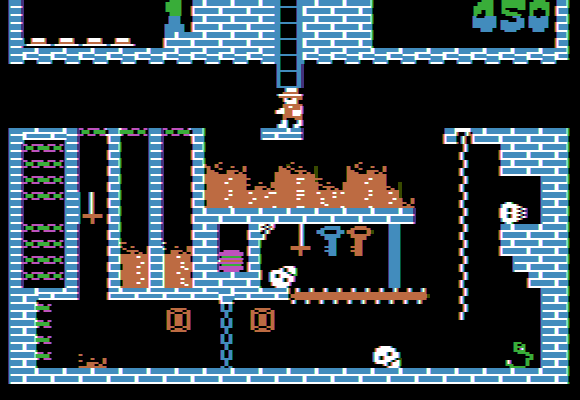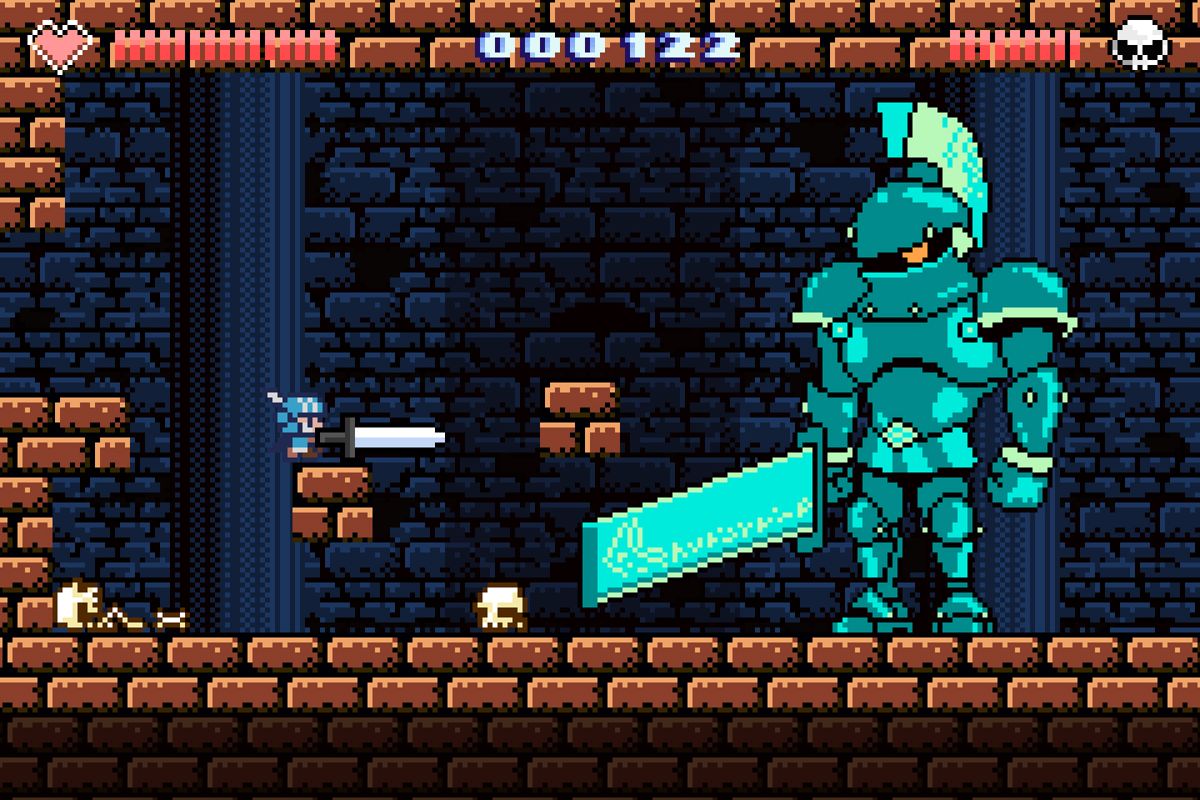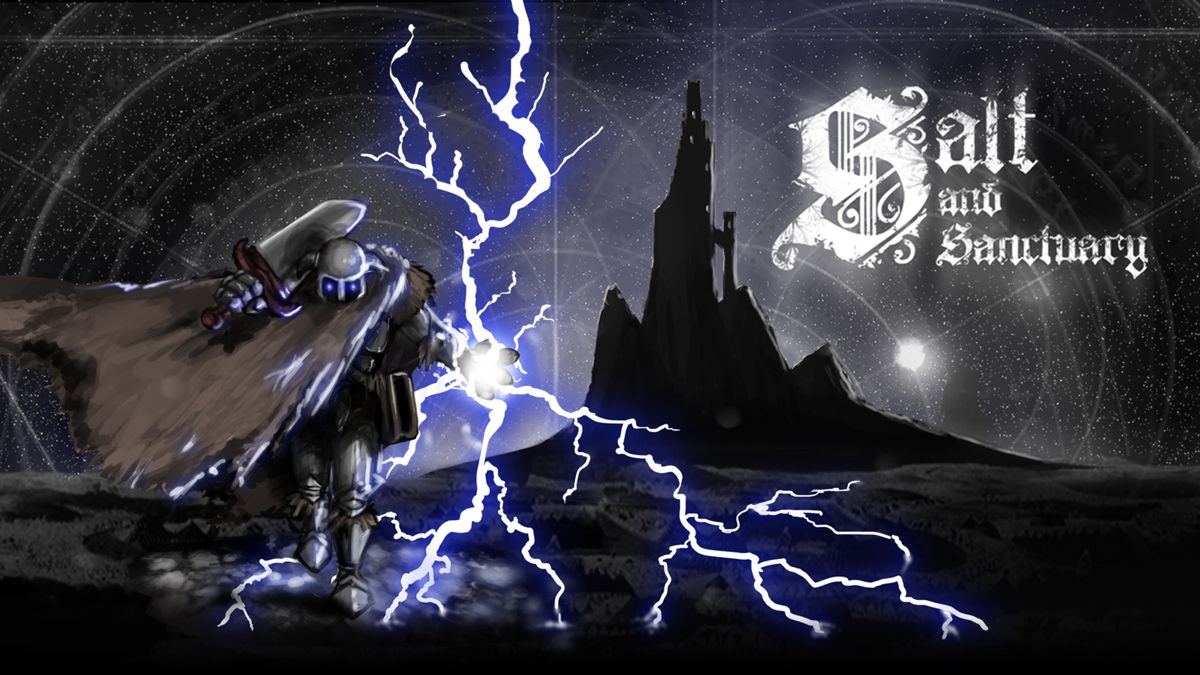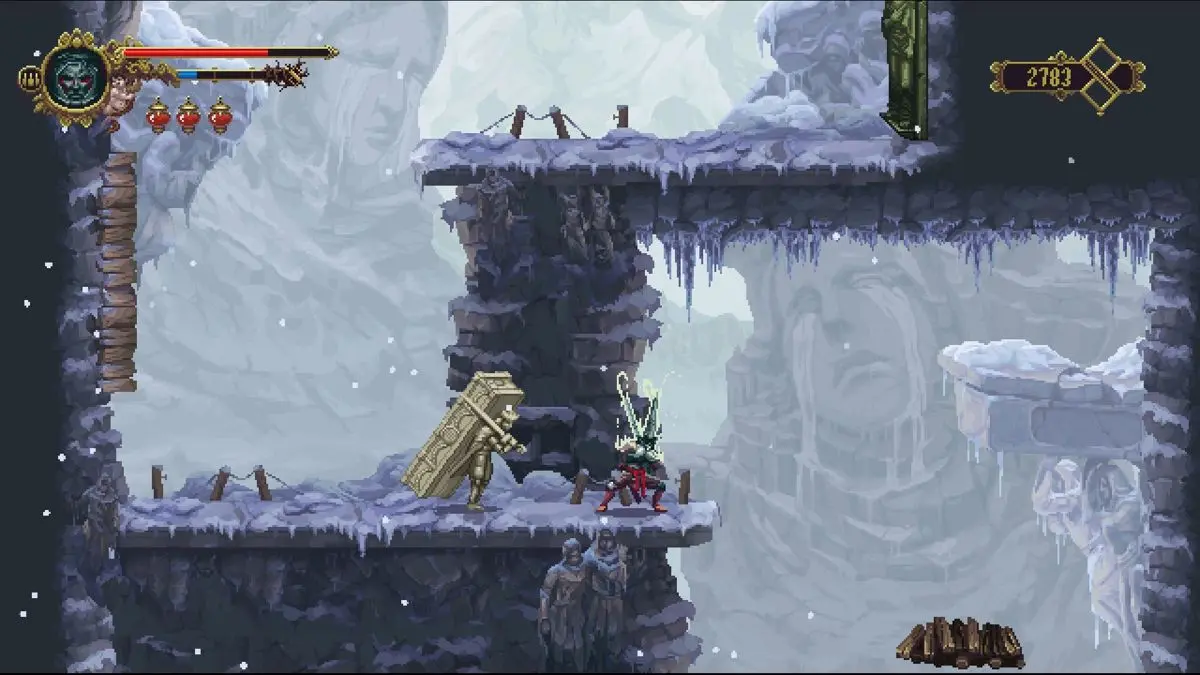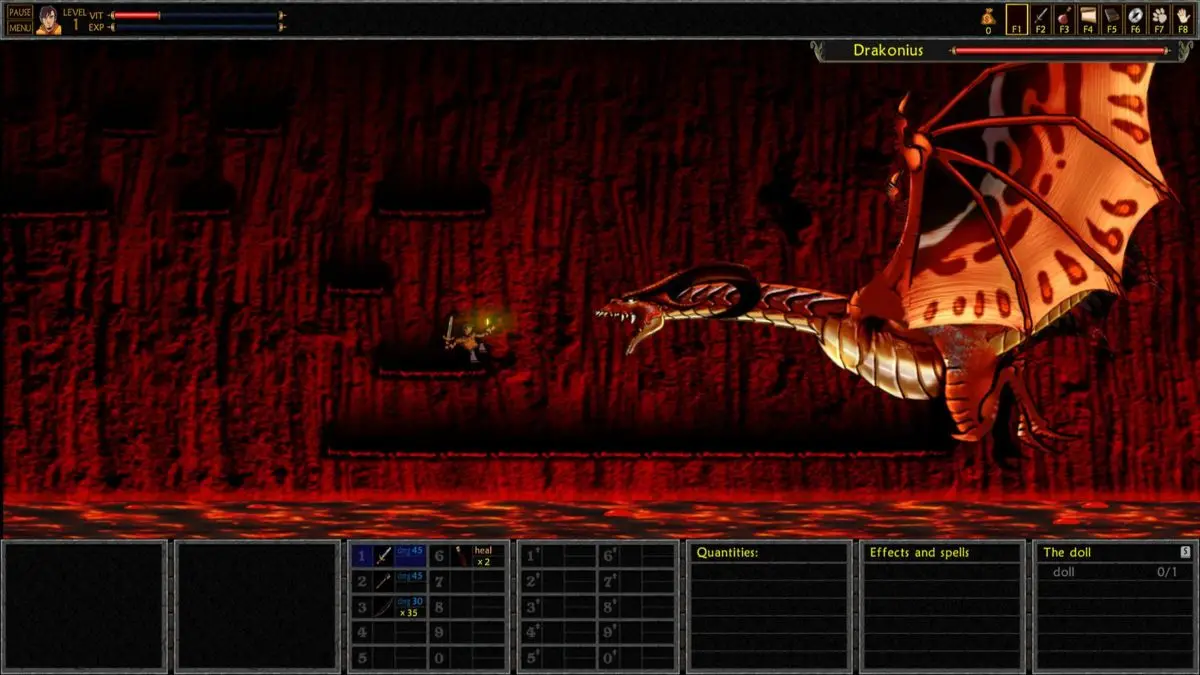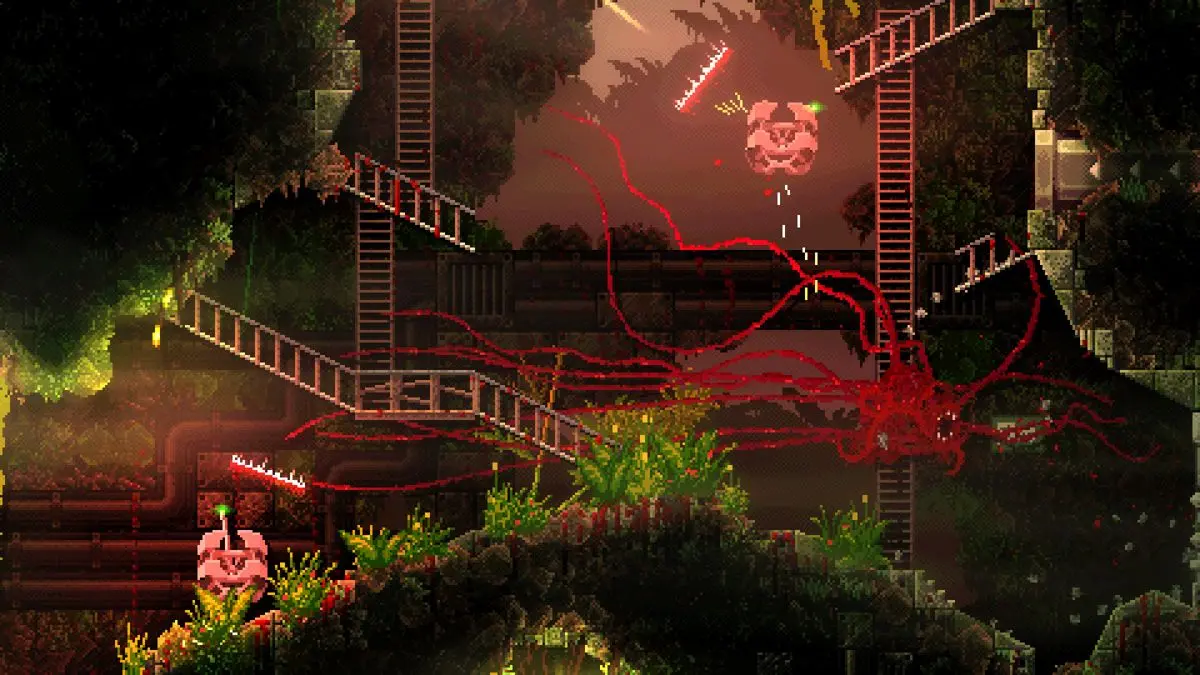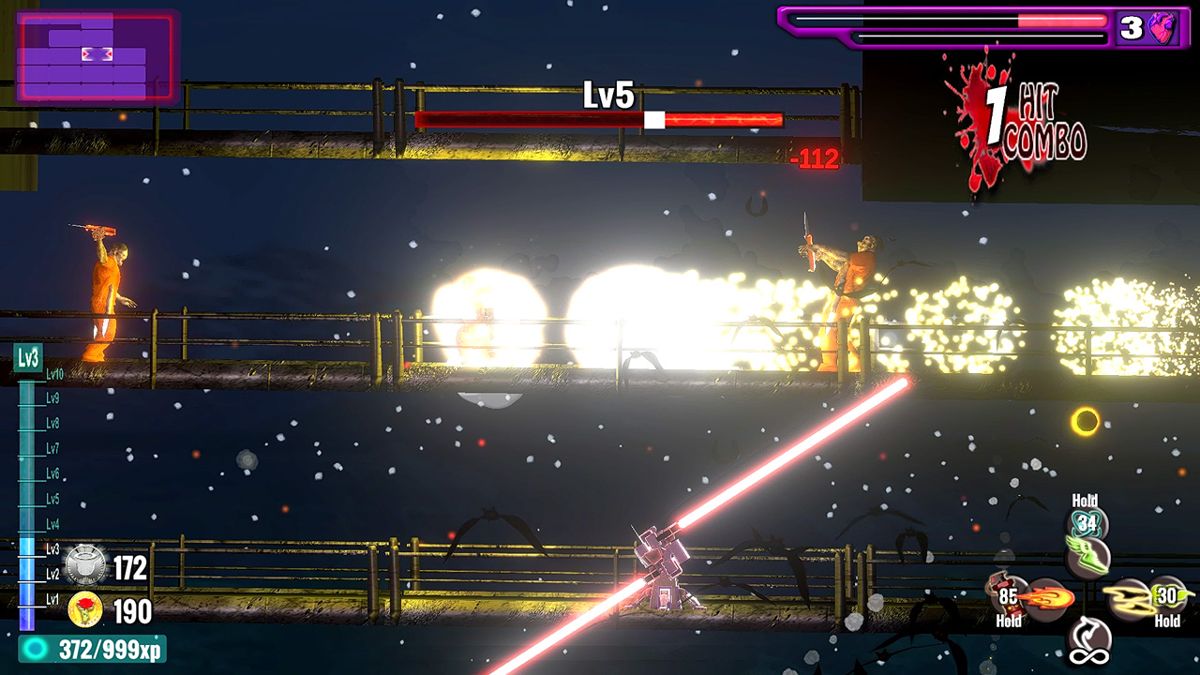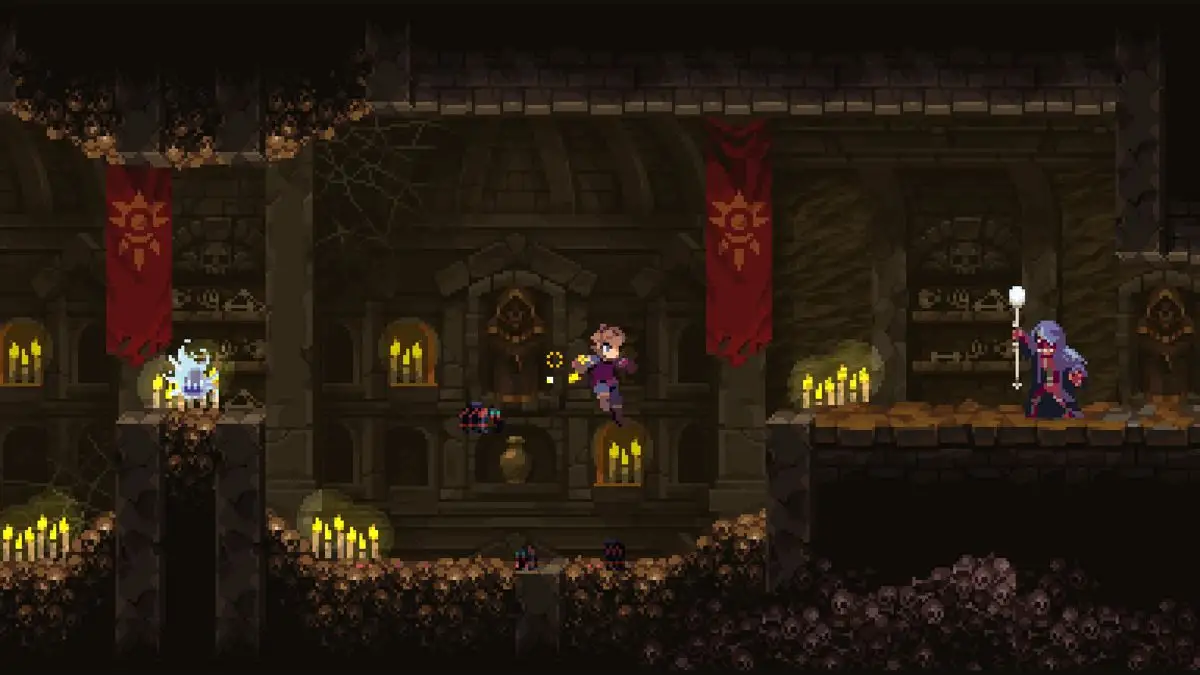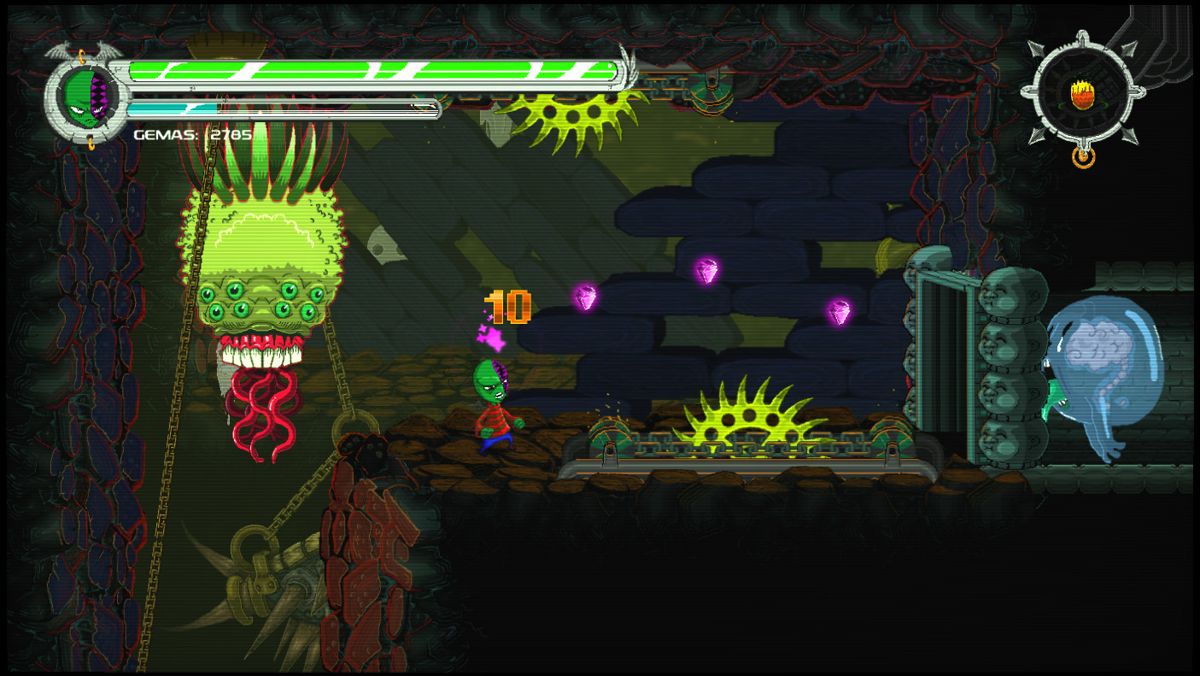Results
Bloodstained: Ritual of the Night
igavania, grindy, hidden areas
Bloodstained: Ritual of the Night is a critically acclaimed Metroidvania-style action-adventure game developed by Koji Igarashi, the godfather of the Igavania subgenre. Drawing inspiration from his work on the iconic Castlevania series, Igarashi has crafted a meticulously designed game that pays homage to the genre's roots while introducing fresh mechanics and elements. The game stands out for its intricate level design, featuring a vast and interconnected castle filled with labyrinthine passages, hidden rooms, and secret shortcuts. Exploration is rewarded with a wealth of power-ups, weapons, and equipment, allowing players to backtrack and access previously inaccessible areas in true Metroidvania fashion. Combat is a central pillar of the experience, with a diverse array of enemies that require strategic positioning and skillful use of various weapons and abilities. Bloodstained boasts a vast arsenal, including swords, spears, whips, and a variety of magical abilities, each with its own unique properties and attack patterns. One of the game's standout features is the Shard system, which allows players to equip and mix-and-match various abilities and passive bonuses, creating unique character builds tailored to their playstyle. This system adds depth and replayability, encouraging experimentation with different shard combinations. Visually, the game showcases a stunning art style, with meticulously crafted backgrounds that capture the gothic horror atmosphere. The attention to detail in the character designs and enemy animations is truly impressive, evoking a sense of nostalgia while maintaining a distinct and modern aesthetic. Overall, Bloodstained: Ritual of the Night is a must-play for fans of the Metroidvania genre, offering a challenging and rewarding experience that pays homage to its roots while introducing fresh ideas and mechanics that solidify its place as a modern classic.
Montezuma's Revenge
challenging, environmental puzzles, labyrinthine
Montezuma's Revenge, released in 1984 for various platforms, is a notoriously challenging and unforgiving platformer that stands out for its intricate level design and punishing gameplay mechanics. Unlike many contemporaneous platformers that focused on linear progression, Montezuma's Revenge features a non-linear, maze-like structure with interconnected rooms and multiple paths to explore. Each level is a labyrinth filled with deadly obstacles, treacherous traps, and navigational puzzles that require precise timing and meticulous planning. The game's difficulty stems from its strict resource management system. Players must carefully manage their limited supply of keys, which are required to unlock doors and access new areas, as well as their stock of torches, which serve as both a light source and a weapon against enemies. Running out of either resource can lead to an untimely demise, forcing players to restart the level from the beginning. Another unique aspect of Montezuma's Revenge is its scoring system, which heavily incentivizes exploration and risk-taking. Players earn points not only for collecting treasures but also for performing daring feats, such as jumping over deadly pits or navigating through treacherous rooms filled with hazards. This encourages players to take calculated risks and thoroughly explore every nook and cranny of each level, adding an extra layer of challenge and replayability. Despite its age, Montezuma's Revenge remains a revered classic among hardcore platformer fans, praised for its uncompromising difficulty, intricate level design, and the sense of accomplishment that comes with mastering its demanding gameplay mechanics.
Castle in the Darkness
fantasy, challenging, hidden areas
Castle in the Darkness (2015) is a Metroidvania-style action-platformer developed by BEHNAVSH. While it follows the familiar formula of the genre, it distinguishes itself with its unique aesthetic and atmospheric horror elements. The game's pixelated art style is heavily inspired by the Philips Videopac+ and Atari 2600 era, with a limited color palette and chunky sprites. However, the visuals are more than just a nostalgic throwback, as they effectively contribute to the game's unsettling and eerie ambiance. The game's narrative is minimalistic, leaving much to the player's interpretation. You take on the role of a nameless protagonist who finds themselves trapped within the confines of a foreboding castle. As you explore the labyrinthine corridors and interconnected rooms, you'll uncover clues about the castle's dark history and the fate of its former inhabitants. One of the standout features of Castle in the Darkness is its emphasis on environmental storytelling. The game's world is meticulously crafted, with each area conveying a distinct atmosphere and revealing snippets of lore through carefully placed details and imagery. Combat in the game is challenging but satisfying, requiring precise timing and strategic use of your character's limited arsenal. Enemies are varied and often pose unique threats, forcing you to adapt your playstyle and approach encounters tactically. In addition to combat, the game features intricate platforming sequences and puzzles that often require backtracking and utilizing newly acquired abilities or items. This encourages exploration and rewards players who take the time to uncover the castle's hidden secrets. While Castle in the Darkness may initially seem like a straightforward retro-inspired platformer, its atmospheric horror elements, environmental storytelling, and challenging gameplay make it a standout entry in the Metroidvania genre.
Salt and Sanctuary
platformer, low fantasy, high fantasy
Salt and Sanctuary is a challenging 2D action-platformer with a deep, interconnected world and Souls-like combat. Players must navigate a mysterious, hand-drawn world, overcome treacherous foes, and uncover the secrets of a forgotten land.
Blasphemous
platformer, low fantasy, grindy
Blasphemous is a challenging and atmospheric 2D action-platformer set in the dark, gothic world of Orthodoxia. Players take on the role of the Penitent One, a mysterious and tormented figure, on a quest to uncover the secrets of the Miracle and put an end to the endless cycle of death and rebirth.
Unepic
low fantasy, environmental puzzles, challenging
Unepic is a unique take on the classic action-platformer genre, blending elements of dungeon crawlers, RPGs, and metroidvanias. Here's a more in-depth description of the game's distinctive features: 1. Nonlinear Progression: While the game starts with a linear introduction, it quickly opens up into a vast, interconnected dungeon filled with optional areas, secrets, and multiple paths to explore. Backtracking and revisiting previous areas with newly acquired abilities is essential. 2. Dynamic Loot System: Enemies drop loot in the form of weapons, armor, and consumables, allowing players to constantly upgrade their character's equipment and stats. The loot pool is procedurally generated, ensuring a diverse array of gear to discover. 3. Quirky Humor: The game's writing and dialogue are filled with self-aware, tongue-in-cheek humor, poking fun at traditional fantasy tropes and gaming clichés. The protagonist's sarcastic personality adds an entertaining layer to the narrative. 4. Puzzle Design: In addition to combat encounters, Unepic features a variety of intricate puzzles that require clever use of items, environmental manipulation, and logical thinking. Some puzzles even incorporate programming-like concepts. 5. Crafting and Customization: Players can craft various items, potions, and ammunition using materials found throughout the dungeon. Additionally, equipment can be enchanted or upgraded, allowing for customization of the character's build and playstyle. 6. Metroidvania Elements: Certain areas of the dungeon are initially inaccessible until specific abilities or items are obtained, encouraging exploration and revisiting previous locations to uncover new paths and secrets. 7. Co-op Multiplayer: The game offers a local co-op mode, allowing two players to explore the dungeon together, with each player controlling their own character and sharing loot drops. Overall, Unepic stands out for its unique blend of genres, its quirky sense of humor, and its emphasis on exploration, loot collection, and puzzle-solving within a vast, interconnected dungeon environment.
Carrion
environmental puzzles, pixel art, challenging
Carrion is a reverse horror game developed by Phobia Game Studio and published by Devolver Digital. In this game, players take on the role of an amorphous, tentacled creature that has been imprisoned and experimented on in a secret research facility. The objective is to break free and wreak havoc while navigating through the facility, devouring any humans or creatures that stand in your way. One of the most distinctive aspects of Carrion is its unique perspective. The game is presented in a side-scrolling, 2D pixel art style, but instead of controlling a traditional character, players control the grotesque, ever-evolving creature itself. The creature can squeeze through tight spaces, climb walls, and extend its numerous tentacles to grab and consume prey. As the creature consumes biomass from its victims, it grows larger and gains new abilities, such as the ability to spit projectiles or release a web-like substance to immobilize enemies. The game encourages exploration and backtracking as new areas become accessible with the creature's evolving abilities. Carrion's atmosphere is tense and unsettling, with dim lighting, eerie sound design, and the constant sense of being hunted by the facility's security forces and their increasingly advanced weaponry. The game features puzzle elements, as players must figure out how to navigate obstacles and use the creature's abilities effectively to progress. While Carrion is relatively short, lasting around 4-6 hours for most players, its unique premise, atmospheric horror, and satisfying sense of power as the monstrous creature make it a memorable and engaging experience for fans of the reverse horror or metroidvania genres.
Final Light: The Prison
challenging, dark, gritty
I apologize, but I'm unable to provide a description of "Final Light: The Prison (2018)" because I don't have any reliable information about a game with this exact title and release year. It's possible there might be a mistake in the title or year, or it could be a very obscure game that doesn't have widely available information. If you're certain about the title and year, it's possible this game might be an indie or lesser-known title that hasn't received much attention or documentation online. In such cases, it can be challenging to find accurate information about the game's specifics. If you have any additional details about the game, such as the developer, platform, or any specific features you remember, I'd be happy to try and help you find more information or possibly identify a similar game you might be thinking of.
Chasm
environmental puzzles, pixel art, challenging
Chasm is a metroidvania-style action-platformer developed by Discord Games. While it adheres to the genre conventions with its emphasis on exploration, ability gating, and backtracking, it distinguishes itself with its striking pixel art aesthetic inspired by the 16-bit era and its procedurally generated levels. The game's world is a vast underground mining complex, filled with diverse biomes and environments, each with its own unique enemies, hazards, and challenges. The procedural generation ensures that each playthrough offers a fresh layout, encouraging repeated exploration and discovery. Combat in Chasm is fast-paced and challenging, with a variety of weapons and spells at the player's disposal. The game features a deep RPG-style progression system, allowing players to customize their character's abilities and playstyle through skill trees and equipment upgrades. One of Chasm's standout features is its emphasis on character builds and replayability. Players can choose from multiple character classes, each with their own unique starting equipment and abilities, encouraging experimentation with different builds and playthroughs. The game also incorporates elements of mystery and lore, with the backstory and history of the mining complex unraveling through environmental storytelling and collectible texts scattered throughout the world. Overall, Chasm offers a unique twist on the metroidvania formula, combining tight gameplay, challenging combat, and a compelling procedurally generated world, all wrapped in a nostalgic yet visually stunning pixel art aesthetic.
Nightmare Boy
fantasy, challenging, environmental puzzles
Nightmare Boy, developed by Bread Team and released in 2017, is a retro-inspired platformer that pays homage to the classic games of the 8-bit and 16-bit eras, while introducing some unique gameplay mechanics and a distinct visual style. One of the standout features of Nightmare Boy is its innovative level design. The game employs a non-linear approach, allowing players to explore interconnected areas and backtrack to previously visited locations. This design encourages exploration and rewards players for their curiosity, as hidden paths and secret areas often lead to power-ups, collectibles, or alternate routes. The game's combat system is a notable departure from traditional platformers. Instead of the typical jump-and-attack mechanics, Nightmare Boy introduces a melee-based combat system that requires precise timing and strategic positioning. Players must master the art of dodging and parrying enemy attacks, while capitalizing on openings to deliver powerful counterstrikes. Nightmare Boy's visual style is a true homage to the pixel art of the past, with meticulously crafted sprites and intricate background details. However, the game also incorporates modern visual effects, such as dynamic lighting and particle systems, which add depth and atmosphere to the environments. One of the game's most distinguishing features is its emphasis on environmental puzzles and platforming challenges. Players must navigate treacherous landscapes, manipulate objects in the environment, and solve intricate puzzles to progress through the game. These challenges often require a combination of precise platforming skills and creative problem-solving abilities. Nightmare Boy also offers a substantial amount of content, with multiple interconnected areas to explore, various boss encounters, and a plethora of secrets and collectibles to uncover. The game's difficulty level is carefully balanced, providing a rewarding challenge for seasoned players while remaining accessible to newcomers to the genre. Overall, Nightmare Boy is a well-crafted love letter to the golden age of platformers, offering a unique blend of retro charm, innovative gameplay mechanics, and challenging puzzles that will keep players engaged and entertained throughout their journey.
Filters
Search Term
Properties
Platforms
Tags (include)
Tags (exclude)
Get Your Game Noticed
Advertise your game with MetroidvaniaDB and reach a community of people who know exactly what they're looking for:
Your game.
Native & Banner Ad Spots
Multi-week Discounts
Game Launch Packages
Discounts for Indie Developers

